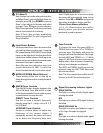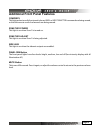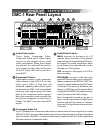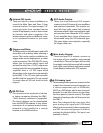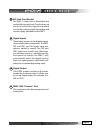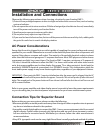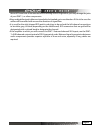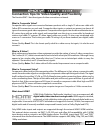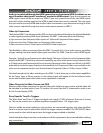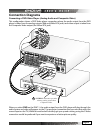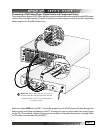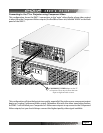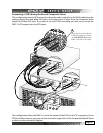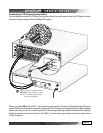
Page 22
Page 23
Connection Tips for Video Quality and Flexibility
The Emotiva DMC-1 has three types of video connections on board:
What is Composite Video?
Composite video signals are connected between products with a single 75-ohm coax cable with
Yellow RCA connectors on each end. Composite video inputs or outputs are present on almost all
types of consumer grade video equipment. Composite video signals can also be modulated onto an
RF carrier, along with an audio signal, and transmitted over-the-air or on coax cable, by broadcast
stations and cable TV systems. RF video signal cables are usually 75-ohm coax terminated with
screw-on F-connectors. That’s what your cable TV wiring is if you have standard (non digital) cable
services.
Picture Quality: Good. This is the lowest quality cable for a video source, but again, it is also the most
common.
What is S-Video?
Most midrange and premium video equipment provide the option of using S-video connections.
The S-video (or Y/C) cable is terminated at each end with a four-pin DIN connector. Although it may
appear to be a single cable, internally it has two 75-ohm coax or twisted pair cables to carry the
separate Y (luminance) and C (chrominance) signals.
Picture Quality: Better. The S-video cable will oer marked improvement over a composite cable.
What is Component Video?
Component cables look just like composite cables. The dierence is that, where a composite cable
carries the entire video signal on a single cable, component cables split the signal in three. The signal
itself is referred to as either Y,Cr,Cb, or Y,Pb,Pr. Manufacturers make connecting these cables easy by
color coordinating them. The tips of the cables and jacks will be red, green and blue. A good rule of
thumb is that, if the connections are RCA type, it is usually a component cable. Most high-end DVD
players and HDTV tuners will have component connections.
Picture Quality: Best. This connection gives a superior image over Composite or S-Video connections.
What about HDMI?
HDMI (High-Denition Multimedia Interface) is an uncompressed, all-
digital audio/video interface in a single cable. HDMI supports standard,
enhanced, or high-denition video, plus multi-channel digital audio on a
single cable. It transmits all ATSC HDTV standards and supports 8-channel, 192kHz, uncompressed
digital audio and all currently-available compressed formats (such as Dolby Digital and DTS).
Only HDMI video inputs and outputs are supported through the external HSM-2 HDMI switcher.
This external device connects via DMC-1's RS-232 port and oers full compatibility with 2 HDMI
input devices and an output to an HDMI display device. The HDMI inputs track "SAT" and "DVD"
commands from the Emotiva remote. The HDMI switcher supports 480i, 480p, 720p, 720i, and 1080i,
1080p resolutions.



